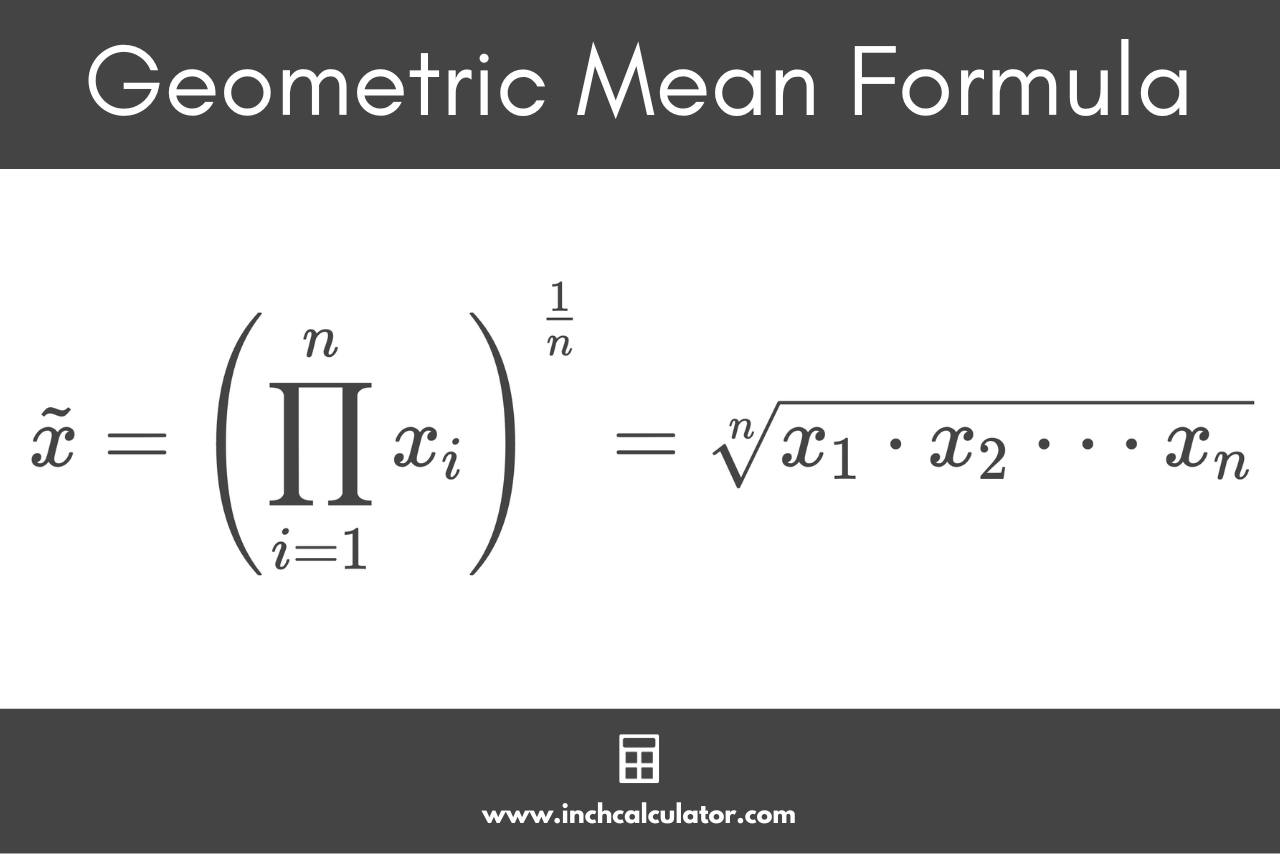Geometric Mean Calculator
Find the geometric mean of a data set by entering the numbers in the dataset below.
Results:
| Geometric Mean (x̃): | |
|---|---|
| Numbers in Set (n): |
Steps to Solve
Apply the Geometric Mean Formula
Step One: Find the Product of the Numbers in the Set
Step Two: Find the nth Root
On this page:
How to Calculate the Geometric Mean
In statistics, given a dataset of n numbers, the geometric mean is the average of a data set that is found using the nth root of the product of each number in the set.
The geometric mean, sometimes also called the geometric average, is similar to the arithmetic mean in that it is a measure of the central tendency of the data, but instead of measuring the center using addition and division, it uses multiplication and the root.
The relationship between the geometric and arithmetic means becomes clearer if you take the logarithm of the geometric mean formula. Doing so, it becomes clear that the logarithm of the geometric mean of some values is the arithmetic mean of the logarithms of these values. For this reason, you can think of the geometric mean as being like an arithmetic mean on the log scale.
The geometric mean is a way of measuring the average of a progression of data, which is why it’s often used in finance, investing, and economics, for instance, to calculate compound interest or return on investment.
Geometric Mean Formula
The geometric mean x̃ can be expressed using the following formula:[1]
Where:
xi = each number in the set
n = total number of values in the set
The formula states that the geometric mean x̃ is equal to the product of a set of n numbers, raised to the power of 1 divided by n.
This formula is equivalent to the nth root of the product of the numbers in the set, so a perhaps more familiar formula to find the geometric mean is:
So, the geometric mean x̃ is equal to the nth root of the product of each number xi in the set, where n is equal to the number of elements in the set.

Using the formula, you can find the geometric mean in a few steps.
Step One: Find the Product
First, find the product of all of the numbers in the set. You can do this by multiplying each number in the set together.
Step Two: Find the Root
Then, count the number of items in the set and set this value to n. Once you have the count, take the nth root of the product.
For example, let’s find the geometric mean for the numbers [2,3,5,7]
Let’s start by finding the product of all of the numbers.
Then, let’s take the nth root of 210, with n being equal to 4, since there are four numbers in the set.
So, the geometric mean x̃ of the data set above is roughly equal to 3.806754.
Note that all values in the data set must be greater than zero for the geometric mean formula to work correctly; negative numbers are not supported by the formula. Using negative numbers could result in taking the square root of a negative, resulting in an imaginary number.
For example, let’s use logarithms to find the geometric mean of 10, 100, 1000. Note that the log values are 1, 2, and 3.
Therefore, the arithmetic mean of the log values in this set is:
Exponentiating to bring the values back out of the log scale, you get:
References
- Statistics LibreTexts, Business Statistics - 2.5: Geometric Mean, https://stats.libretexts.org/Bookshelves/Applied_Statistics/Introductory_Business_Statistics_(OpenStax)/02%3A_Descriptive_Statistics/2.05%3A_Geometric_Mean


